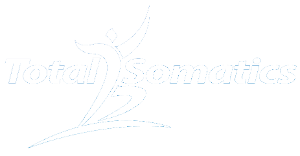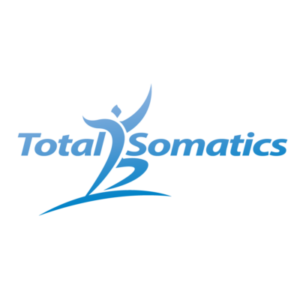Self management of Chronic pain
From time to time we may suffer with pain. But for some, pain is a daily issue which can overwhelm and restrict their quality of life. Chronic pain can last way beyond the expected time for healing and repair following surgery or a trauma. To deal with chronic pain certain pharmaceutical drugs such as codeine or other opioids are administered. Research by DC Turk on ‘the clinical effectiveness and cost effectiveness of treatments for patients in chronic pain’ revealed interesting findings. The research showed that opioids are not effective in the longer term, contributing on average to only a 30% reduction in pain. To accompany this research it was noted that unwanted side effects come with opioids. These side effects include nausea, drowsiness, constipation, mood change and difficulty in concentrating. A tolerance to opioids can develop with the dosage being progressively increased to continue to provide pain relieving effects.
Research conducted by RM Gallagher and MJ Cousins in 2011 revealed that people with chronic pain who are actively involved in managing it on a daily basis have less disability that those who are engaged in passive therapies, such as taking medication and surgery.
As we know from Somatics, the whole body/person or soma is involved. So when a person suffers with chronic pain, it is a complex experience because a person’s physical, emotional and mental health are affected. It impacts on their social activities too.
Some people may be anxious to move because it triggers pain, but mindful gentle movement is important to keep the muscles conditioned. When you stop using certain muscles and hold your body is a different posture to nurture or protect yourself from pain, it creates sensory motor amnesia. This is where the areas of your brain which coordinate and control muscle movement, in the form of contraction and relaxation have simply forgotten what to do. The brain to muscle connection has developed amnesia, it has simply forgotten how to switch muscles on and off. This creates further muscular tension and tightness, altering a person’s frame and the development of additional health issues may occur.
So when we start working with our body in a Somatic manner, we can regain control of muscles which have been habitually tight, possibly due to years of desk work, other repetitive actions, emotional stress and trauma or following surgery. Somatics always targets from the centre of the body (pelvic region) to the periphery. Once we can get an improvement in releasing long held muscle tightness and tension in the pelvis, people immediately start to feel lighter and looser with their movements. They comment on a reduction in their pain levels. Once you regain conscious or voluntary control of your muscles within the pelvis and lower back, you find walking becomes easier to do because the muscles in and around the pelvis, hips and lower back are working more efficiently. Walking is an excellent exercise for all ages and is often suggested by health practitioners for keeping the body supple. But if you suffer with tightness in your lower back, hips or pelvis, walking can still be challenging. This scenario can be remedied. Once you develop and practise mindfulness with Total Somatics, your level of muscle movement, coordination and posture becomes heightened. You have a new level of awareness when you pursue activities such as walking.
Once you learn empowering skills to take control of your health, it begins to improve emotional and mental health. No longer do you feel out of control. Remember that when your muscles are tight and tense, they increase pressure on nerves and tissue, which increases pain. So in order to walk/move freely and comfortably, a daily somatics session of 10-20 minutes will improve your biomechanics. Starting each Somatics session with deep breathing helps relax the central nervous system and make the brain conductive to learning and wiring neural patterns. This helps improve brain-body communication and coordination.
After slowing the nevous system down, mindful somatic movements are developed which involve pandiculating muscles. This changes the behaviour of the muscle. It allows a chronically tight muscle or muscle groups to ‘switch off’ when it doesn’t need to be used with movement. This is different to stretching because pandiculation involves the brain, whereas stretching involves the spinal cord. So when we stretch, there is no long term changes to the intelligence of the muscle. It is purely a spinal reflex action. On the other hand, Pandiculation changes the intelligence of your muscles by training them to contract and relax with voluntary or conscious movement. It breaks the habitually tight muscles we develop over the years. Pandiculation involves 'cortical learning', we retrain the brain to communicate and coordinate muscle movement efficiently.
As you read this blog, just check in with your body now. Notice are you holding tension in your shoulders? Are your shoulders near your ears? Is your head tilted to one side? Are your bum muscles tight and clenched? Are you holding tension in your jaw? Is your head jutting forward? Are you slumped or sat bolt upright (still generating unnecessary tension in your lower back)? Are you frowning?
We live over 95% of the time in our subconscious or unconscious mind. We operate and hold our body in the same habitual patterns of muscular contraction, which create chronic pain and limited range of movement. When we learn to mindfully move our muscles with somatics, we take this new level of awareness to our daily activities. We become ‘somatically aware’ by noticing how we move and use our body in daily activities. We learn to alter how we move to become more efficient with our body.
Mindfulness with Total Somatics teaches you further techniques of both Somatics and mindfulness to help with pain management. Somatics has helped so many people over the decades with reducing pain and moving freely. Would you like to improve your quality of life and return to the activities you love to do? If so, join me, Heidi Hadley in Adelaide for weekly classes. Alternatively you can join me online as I teach you Mindfulness with Total Somatics. The online programs have been created so you can learn somatics in the comfort of your own home. You will discover what somatics is, learn powerful techniques to release muscle tension and reduce pain. The online programs include tailored sessions to deal with back pain, poor mobility, just to name a few.
Take control of your health and well being today. See you on the Mindfulness with Total Somatics program.
Kind regards,
Heidi Hadley













Leave a Reply